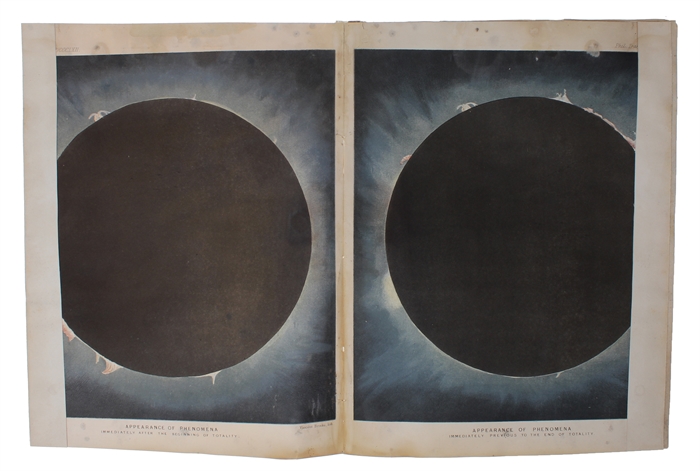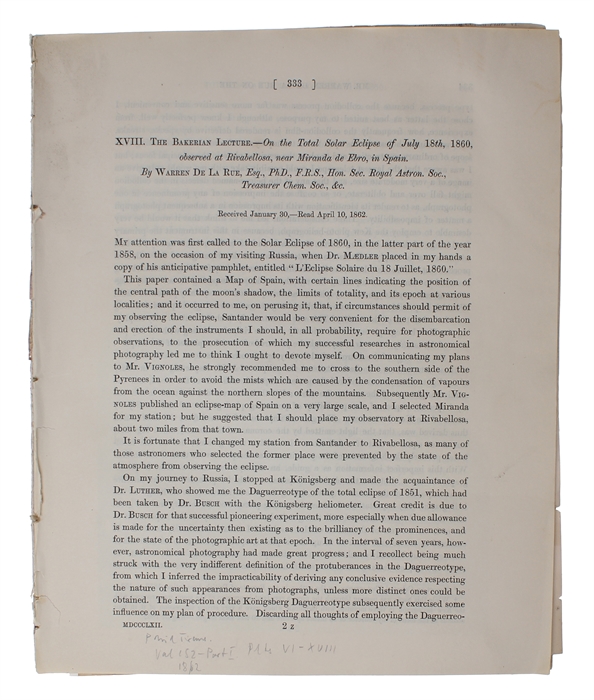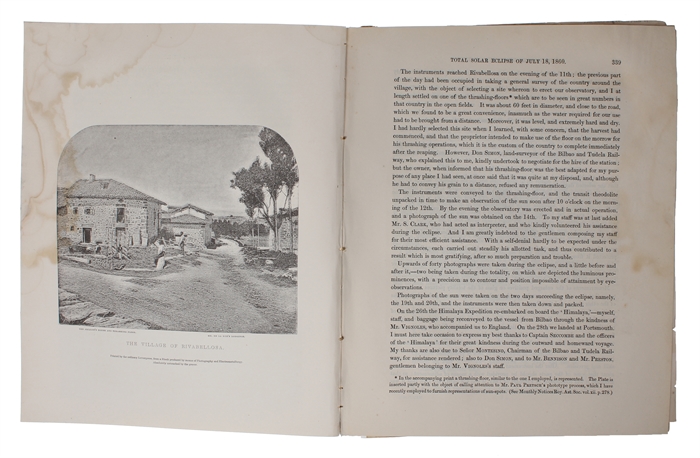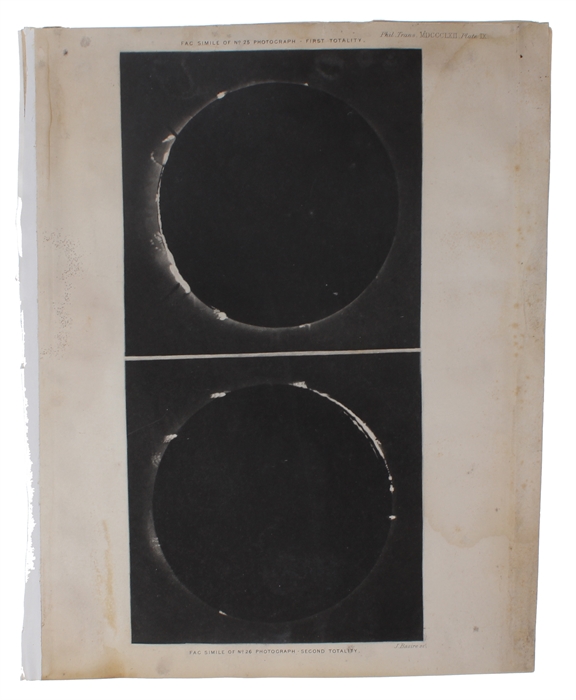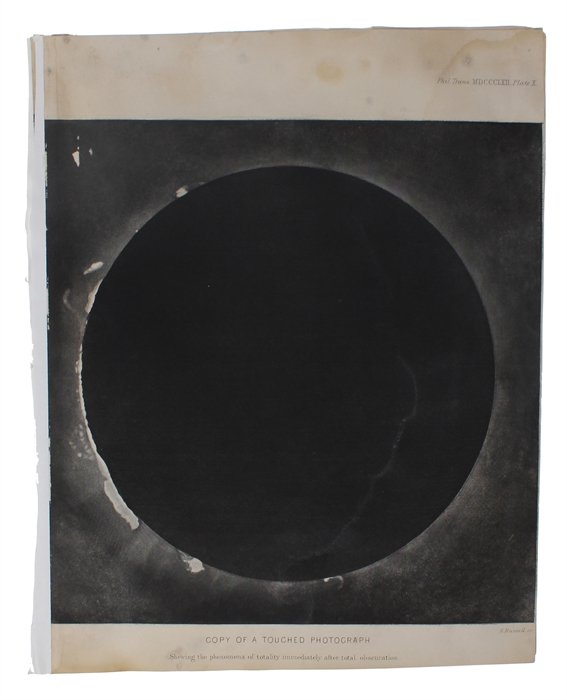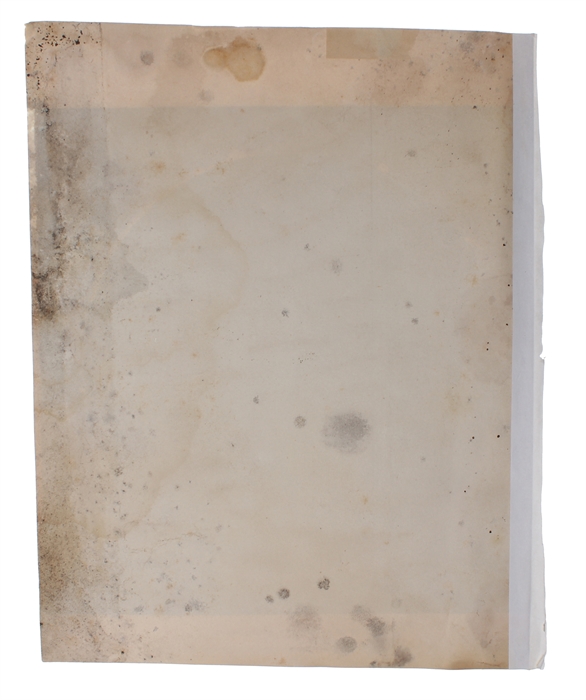RUE, WARREN DE LA. - SOLAR PROMINENCES DISCOVERED.
The Bakerian Lecture. - On Some Total Solar Eclipse of July 18th, 1860, observed at Rivabellosa, near Miranda de Ebro, in Spain. Received January 30,- Read April 10, 1862.
(London, Taylor and Francis, 1862).
4to. No wrappers as extracted from "Philosophical Transactions" 1862. Vol. 152 - Part II. Pp. 333-416, textillustrations (his photoheliograph), scale of colours and 13 plates. Plates somewhat soiled, but the 6 engraved plates, showing the prominences only the margins affcted by the soiling. These facsimiles (copies of touched photographs) probably the first of their kinds. Text clean.
First appearance of pioneer-paper in astronomical photography, where he took wet-plate photographs of the moon-blocked sun during a total solar eclipse, and from them discovered solar prominences. - This was the first solar eclipse to be photographed, using the Kew Photoheliograph, a purpose-built combined camera and telescope designed by de la Rue and built in 1857 by Andrew Ross.
De la Rue, Warren 1815-89, British scientist and inventor. Especially noted as an astronomer, he was a pioneer in celestial photography. He adapted the wet-plate process to lunar photography and invented (1858) for Kew Observatory a photoheliograph, the first device to give good solar pictures. His photographs of a solar eclipse in 1860 demonstrated that prominences observed at the sun's edge are of solar origin. De la Rue is known also for his research in chemistry, solar physics, and electrical discharge through gases.
In 1860 De la Rue took the photoheliograph to Spain for the purpose of photographing the total solar eclipse which occurred on 18 July of that year. This expedition formed the subject of the Bakerian Lecture - the paper offered -. The photographs obtained on that occasion proved beyond doubt the solar character of the prominences or red flames, seen around the limb of the moon during a solar eclipse. In 1873 De la Rue gave up active work in astronomy, and presented most of his astronomical instruments to the university observatory, Oxford. Subsequently, in the year 1887, he provided the same observatory with a 13-inch refractor to enable it to take part in the International Photographic Survey of the Heavens.
Order-nr.: 42379

